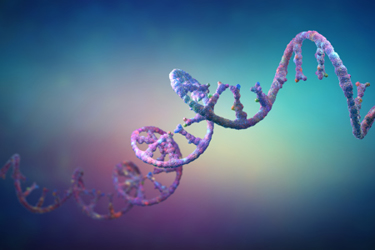Code Bio's Platform Designs, Develops Gene Therapies For Rare Diseases

By Erin Harris, Editor-In-Chief, Cell & Gene
Follow Me On Twitter @ErinHarris_1

Code Bio is a Philadelphia-based genetic medicines company, which recently announced a collaboration with Takeda to leverage Code Bio’s proprietary targeted 3DNA non-viral genetic medicine delivery platform to design and develop gene therapies for rare disease indications. I caught up with Code Bio’s Chairman, CEO, and Co-Founder, Brian McVeigh, to learn more about 3DNA and why it enables targeted delivery of gene therapy, RNAi, and other genetic medicine modalities.
Explain Code Bio.
At Code Bio, we are pioneering the development of genetic medicines to treat and potentially cure serious and life-threatening genetic diseases. We leverage our novel, non-viral, multivalent, synthetic DNA delivery platform, 3DNA®, to deliver genetic medicines. As a company, we’ve made significant progress since our launch in 2020. In early 2021, we raised $10 million in seed financing from NEA, Takeda Ventures, 4BIO Capital, UPMC Enterprises, CureDuchenne Ventures, and the JDRF T1D Fund. We’ve built an executive team that have all previously worked together successfully in some capacity, enabling us to hit the ground running. Our seasoned team of leaders with experience in business, biotechnology, and nanotechnology is advancing our proprietary technology and recruiting additional scientific and operational talent to deliver on the potential of our delivery platform.
Explain Code Bio’s non-viral 3DNA delivery platform and why it enables targeted delivery of gene therapy, RNAi, and other genetic medicine modalities.
Our 3DNA technology platform has been engineered to overcome many of the challenges inherent with viral-based delivery approaches including lack of targeting specificity, immunogenicity, size, and delivery limitations, inability to re-dose, and manufacturing complexity. Targeting is one of the key differentiators of our platform, and we have strong non-clinical data demonstrating our high degree of tissue-specific and cell-specific targeting capabilities. By limiting the need for high dosing, we are able to minimize the effects from off-targeting. Our 3DNA platform is non-viral so we have the potential to re-dose patients, if needed.
Code Bio has gene therapy discovery programs targeting DMD and T1D. Explain how Code Bio is advancing therapeutic approaches for both.
We are actively building both an internal and external pipeline. Our internal pipeline is focused on two programs – one as a non-viral gene therapy (for DMD) and the other as RNAi (in Type 1 diabetes). We selected these indications based on the high unmet need to help patients, robust nonclinical data in targeting the tissues impacted in these indications, and an established drug development path for these disease states.
Code Bio is partnering with Takeda to design and develop a targeted gene therapy leveraging the 3DNA platform for a liver-directed rare disease program, plus conduct additional studies for central nervous system-directed rare disease programs. Explain this in detail.
Code Bio has announced a collaboration and option agreement with Takeda to leverage our proprietary targeted 3DNA® non-viral genetic medicine delivery platform to design and develop gene therapies for rare disease indications. Through the agreement, Code Bio and Takeda will design and develop a targeted gene therapy leveraging Code Bio’s 3DNA platform for a liver-directed rare disease program, plus conduct additional studies for other liver-directed and/or central nervous system-directed rare disease programs. Takeda has the right to exercise options for an exclusive license for four programs. Under the terms of the agreement, Code Bio will receive double-digit million dollars in upfront, near-term milestone and research funding payments. Code Bio is also eligible to receive future development and commercial milestone payments plus tiered royalties with a potential total deal value over the course of the partnership of up to $2 billion if milestones for all four programs are achieved.
